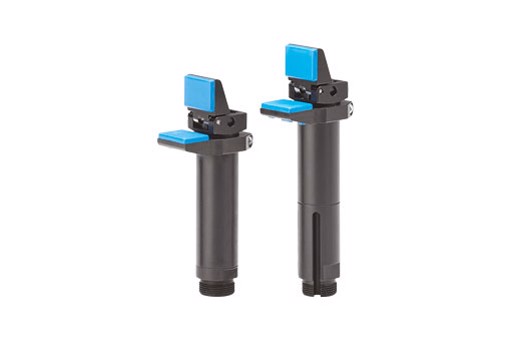Let’s be frank, the ultimate objective of an End-of-Arm tooling designer is to create a gripping mechanism that’s at least as dexterous as a human hand. That’s a lofty goal, one that’s already helping the metal manufacturing industry. But not so fast, metal elements are rapidly being replaced by softer plastics. Let’s hope there’s an equally nimble range of EOAT tools keeping these ductile items safe.
Eliminating Ham-Fisted Parts Clamping
Let’s see, what happens when a soft rubber component is mishandled by a machine? It’s squished between hard gripping fingers. All right, there’s a chance that the pliable plastic will regain its normal outlines. For some plastics, though, there’s no way of guaranteeing this bounce-back effect. A mark is left in the plastic part, or maybe it’s deformed in some wholly unacceptable fashion. Either way, it ends up cast aside. Consequently, a production line’s quality assurance program suffers.
Introducing Gimatic Gripper Fingers
Energy-blind, ordinary grippers clamp down hard. As more pneumatic power enters their input ports, that clamping force grows proportionally. That’s a mechanism that might work on hardened metal parts, but it cannot be used on a plastics production line. And just as a by-the-way, even metal parts shouldn’t be subjected to this approach, not when a gripper finger could damage a special metallic coating. Anyway, for the plastics industry, at any rate, Gimatic gripper fingers are the logical solution. Using Gimatic gripper range as today’s baseline model, these end of arm tools incorporate several sensory inputs. They deliver just the right amount of gripping force, which will handle a soft plastic part without causing any damage.
Laden With Fingertip-Control Features
There are two pneumatic pistons built into each Gimatic gripper. Backed by two independent sensory circuits, the LED mounted controller can detect an empty finger or one that’s lightly clamping a soft rubber component. Moreover, those sensors are solid-state devices, not mechanical levers and springs. That feature makes them more reliable and more load-capable, which means they can securely grip larger plastic parts, not just the smaller bits and bobs that one would expect. After all, no metal product is immune to the plastics-substituting measures that are currently transforming every industrial domain.
That latter statement is true enough. Sheet plastics are replacing sheet metals on automobiles. Tough engineering plastics are even penetrating the structural supports market. As such, these materials need to be handled quickly but delicately. Gimatic gripper fingers ideally suit this kind of work. They’re tough but self-aware, all thanks to a sensor-equipped anodised clamping mechanism, which is available in a number of subtly different configurations. From different degrees of angular contact to many alternative sizing options, these end-of-arm tools are designed to match a vast range of challenging applications.
For more information, visit our Gimatic page, range of downloadable catalogues or contact us.


